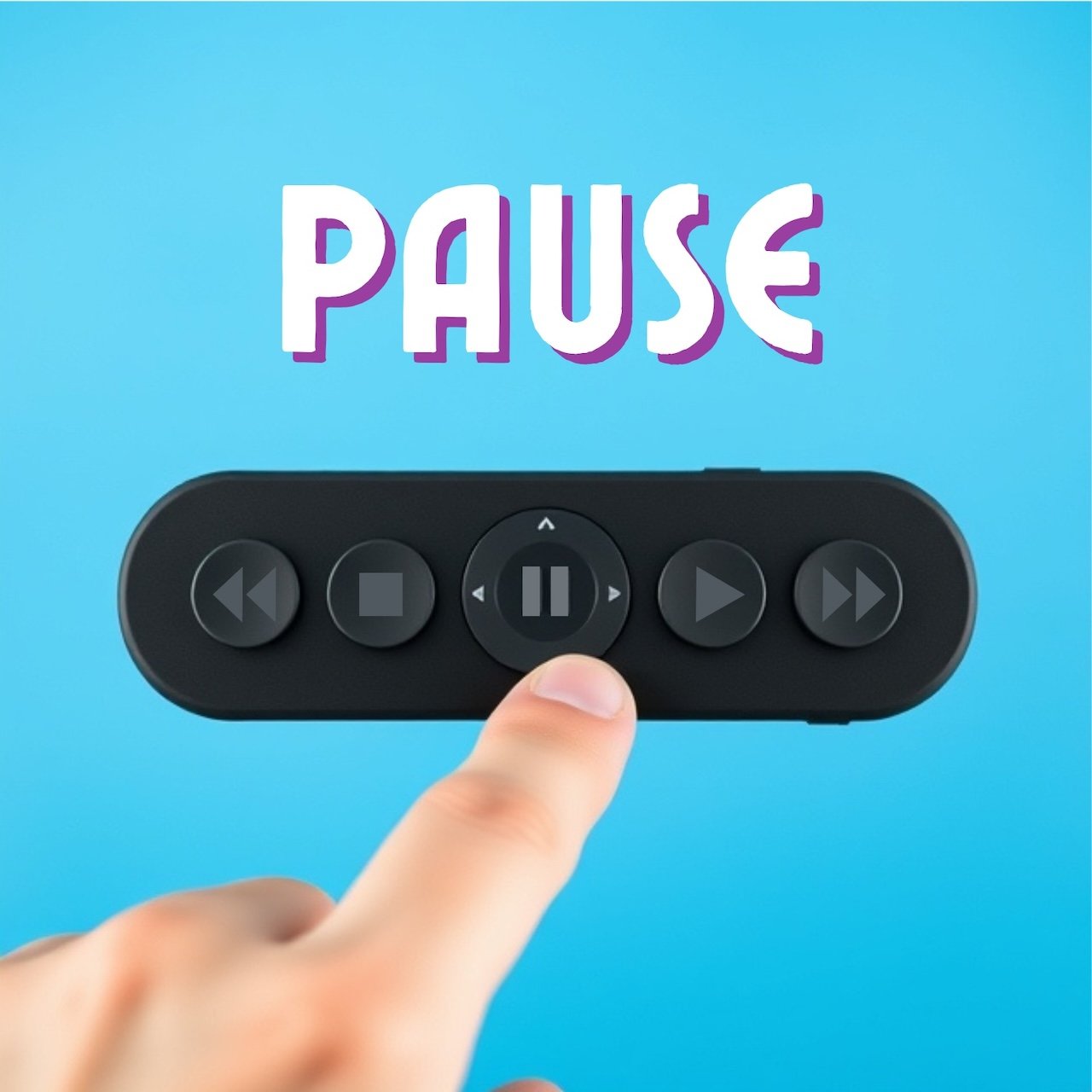The Magic of the Pause
When Saying Nothing Works Wonders
- November 19, 2024

Communication is made up of subtle nuances. A lot of people think that communication is all about how well you speak, write or get your thoughts across. Often, we feel the need to respond immediately – either to make ourselves look good, or to avoid making ourselves look like we don’t know what we’re doing. But there is so much more to communication than just blurting out an answer right away.
Take a look at Cristiana’s situation. She found herself under a lot of pressure to jump right into a recent conversation, but then she reconsidered.
Cristiana was excited yet nervous about her first meeting as the new project manager on an established team. She was familiar with the progress the team had already made, and she had gotten a detailed handover from her predecessor. The project was complex, included multiple stakeholders, and had a number of deadlines coming up soon. To add to this stress, the team had high expectations and was on the hook to deliver big for the company.
As soon as the meeting started, the team leader, Mark, began firing off questions. It seemed like he was trying to gauge Cristiana’s understanding of the project, asking about timelines, resource allocation, and follow-up items from the last meeting. The barrage of questions was overwhelming, and some of the other team members joined in, wondering if Cristiana was really ready for the work ahead.
Instead of jumping in to respond to each point right away, Cristiana took a deliberate pause. She let all the questions hang in the air for a moment, using the silence to organize her thoughts. She had prepared for this meeting, and she wanted to take a minute to glance at her notes. She wanted to ensure that her responses were clear, confident, and on-point.
After a short pause, she was ready to address the questions one by one. She showed that she had taken time to get up to speed, and she shared her plan to help the team move the project forward. Her measured responses demonstrated not only her understanding of the project but also her ability to remain composed under pressure.
Effective communication is often about knowing when to speak and when to stay silent. There’s magic in The Pause – a brief, deliberate silence during a conversation – and it can be a powerful tool to improve your communication. It might feel counterintuitive, especially when you feel pressure to respond quickly, but it can help you to steer conversations, make thoughtful decisions, and ultimately enhance your professional presence.
The Pause
The conversational Pause is an intentional moment of silence before responding. This silence isn’t about hesitation or uncertainty. It’s not a time for ‘ums’ and ‘ahs’. It’s a strategic step that allows you to gather your thoughts, think about your rationale, choose your words, and respond with clarity and purpose.
When you Pause, you give yourself time to reflect on what has been said, why they said it, and what your response options are. It’s a few seconds break that can prevent knee-jerk reactions and ensure that your response aligns with your long-term goals and values. It sounds like we are asking a lot of just a few seconds, but with practice, it can become a natural part of your conversations.
The Pause can be used in various situations – during interviews, presentations, problem-solving, and even in managing team dynamics.
When to use the Pause
Situation #1: The Interview
Job interviews are high-stress situations where the pressure to perform can be overwhelming. You’re under the spotlight with a very important audience evaluating your every move. This stress makes us want to come up with the ‘right’ answer immediately. However, this is where the Pause can be particularly valuable.
Imagine you’re asked a classic interview question about a time you failed or made a mistake. You’ve likely prepared an answer to this question, or at least you’ve outlined one or two situations you might describe if faced with this question. Instead of diving straight into an answer, take a brief Pause. Use this moment to structure your thoughts – what is your read on the interview so far? Which story will you share? How can you frame it in a way that could address a particular skill required for this role? Is there anything you’ve just picked up on during the interview that might lead you to emphasize one part of your story? This Pause allows you to give a more relevant, coherent, and impactful response, showing the interviewer that you are thoughtful and self-aware.
Pausing before answering an interview question can give you a chance to clarify the question if needed, ensuring that your response is on point. Interviewers often appreciate candidates who take their time to provide well-considered answers rather than rushing through with something generic or overly prepared.
Situation #2: The Presentation
We all get stressed out about presentations. After doing the research, preparing the slides, and making the notes, we believe we’re ready. Despite this advance work, presentations are still nerve-wracking, especially with the prospect of questions from the audience. The pressure to answer immediately can lead to incorrect or incomplete answers. Once again, the Pause can be your best ally.
When you get a question during your next presentation, resist the urge to respond immediately. Take a moment to breathe, smile, repeat the question, if necessary (this buys you some more time), and consider your response. This Pause gives you a chance to read the room, think about how to structure your response, give a well-thought-out answer, and show your audience that you are taking their question seriously. You also have time to think about if there is another question behind the question, and you can be ready to proactively answer completely.
The Pause can also be useful if you don’t know the answer right away. Instead of panicking, stop and collect your thoughts. If you still don’t have the answer, you can acknowledge the question and suggest following up after the presentation. This approach maintains your credibility and keeps the presentation on track. As you look around the room during the Pause, you may also notice a colleague or your manager who is ready to help with a response, allowing you to demonstrate inclusivity and teamwork.
Situation #3: The Business Problem
Sometimes we’re up against a business problem with no clear solution in sight. We’ve considered several options, but nothing seems to be the right approach. Our instinct might be to keep pushing, trying different ideas and believing that our continued action will eventually lead to a breakthrough. However, this is another case where the Pause can make all the difference.
When you’re stuck with a problem, stepping away for a brief Pause – whether it’s a few minutes, an hour, or even overnight—can give your mind the space it needs to find a solution.
A Pause allows you to reset. Time away from the problem may inspire new perspectives that you missed in the heat of the moment.
During the Pause, your subconscious keeps working on the problem; it’s turning over all the ideas you have already considered and searches your own mental archives for a similar situation. The Pause can lead to an “aha” moment when you least expect it. Returning to the problem with a fresh perspective can yield new ideas and ultimately more innovative and effective solutions.
Situation #4: The Ineffective Co-worker
Dealing with underperforming team members can be tricky. Your first impulse might be to ignore them, or to address the issue head-on, expressing frustration or issuing an ultimatum. However, this approach can backfire, leading to defensiveness or conflict.
Instead, consider using the Pause. When you notice a team member not pulling their weight, take a moment to assess the situation. What might be causing the issue? Is it a lack of skills, motivation, or perhaps personal challenges? Pausing before addressing the problem gives you time to gather facts and approach the conversation with empathy and understanding.
When you do engage in the conversation, use the Pause strategically. After stating your observations, pause to allow the team member to respond. This not only shows that you value their input but also gives them the space to express their side of the story. From there, you can work together to find a solution that benefits everyone.
It’s an Underused Tool
Despite its effectiveness, many people are reluctant to deploy the Pause regularly. The primary reason is the fear of silence. In the workplace, some worry that silence comes across as a sign weakness or indecision. Therefore, many professionals are compelled to fill every gap in conversation with words, even if they don’t really advance the discussion. The result is often rushed, poorly thought-out responses that may not fully address the situation or, worse, create additional problems. Sometimes the loudest or most verbose voice in the room drives a decision.
Another reason people avoid the pause is that they have the misconception that quick responses demonstrate confidence and competence. Sometimes the quickest, chattiest person in the room is rewarded, even if what they are saying is nonsense. While it’s important to exude confidence, it’s better to communicate with substance rather than with speed. Taking a small pause can project greater confidence. It shows that you are thoughtful, deliberate, and able to articulate your reasoning. In reality, silence can be more powerful than words when used correctly.
Call to Action
Recognize When to Use the Pause and Integrate It into Your Work
Let’s check back in on Cristiana:
The Pause gave Cristiana the time she needed to think before she responded, and it made a strong impression on the team. They saw her as a capable and confident leader who wouldn’t be rattled by difficult situations. This first meeting set the tone for her leadership, establishing her as someone who could be trusted to guide the project to success. Cristiana turned a potentially stressful situation into an opportunity to showcase her strengths. She experienced first-hand the power of taking a moment to think before responding, a practice she continued to use throughout her career.
There are so many situations, at work and outside of work, when the Pause can make your communication stronger. But, it’s more than just a communication technique; it’s also a mindset. You have to practice and find the right situations when you can integrate the Pause into your interactions. You’ll find times to include the Pause during difficult conversations, when making a critical decision, or simply when people or issues are coming at you fast and furious.
You’ll want to practice the Pause in low-stakes situations at first, like during casual conversations or when responding to emails. As you increase your skill with the Pause, you can start applying it in more challenging scenarios. Over time, you’ll find that the Pause becomes a natural part of how you communicate and make decisions. You may even observe others deploying the Pause with you!
More Posts You May Like
- All Projects
- Blog
- Category 1
- Category 2
- Category 3
- Category 4
- category 5
- Category 6















